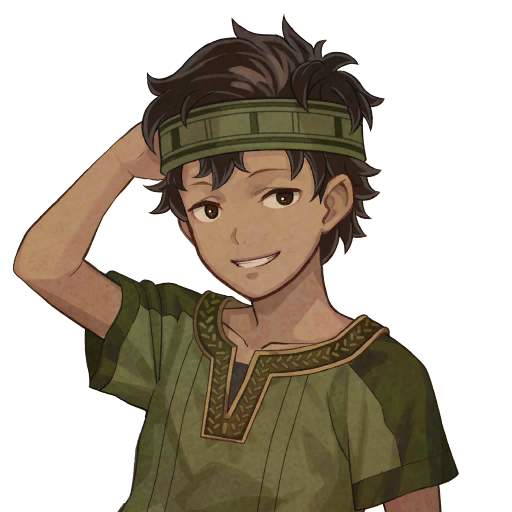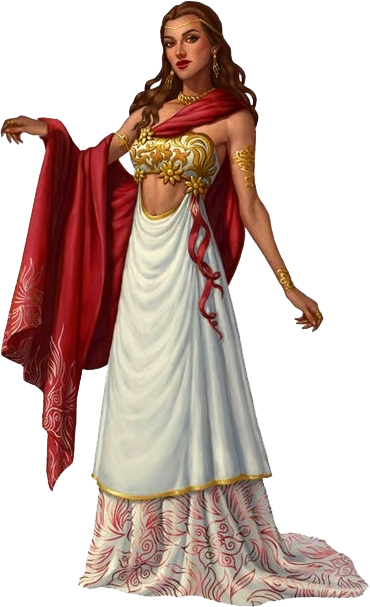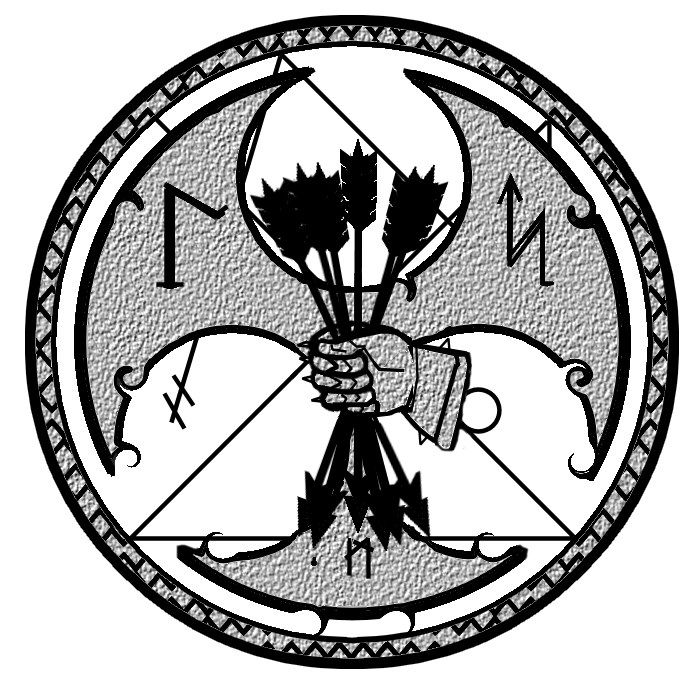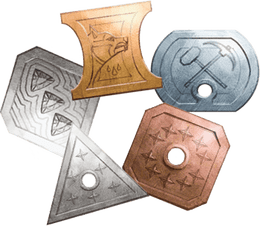Tokian
Naming Traditions
For most of the humanoid species, the naming conventions are similar to that of their ancestry, but humans in particular typically follow a more regional naming convention adapting from a myriad of different species that have become what they are today. Even so many species that have integrated with Tok society have begun naming their offspring more Tokian-type names so it is not uncommon for these names to be shared among many from different cultures and locations.Feminine Names
Aurelia, Avita, Cecilia, Decima, Drusilla, Faustina, Gaia, Galla, Junia, Livia, Laurentia, Marcella, Marilla, Maxima, Octavia, Prima, Quintia, Sabina, Septima, Tatiana, Tauria, Tertia, Tullia, Urbana, Valentia, Varina, VitaMasculine Names
Atticus, Aurelius, Cassius, Cato, Cicero, Cyprian, Decimus, Felix, Justus, Lucius, Magnus, Marcus, Nero, Octavius, Philo, Quintus, Remus, Romulus, Rufus, Seneca, Septimus, Tiberius, Tiberimus, UrbanUnisex Names
Attu, Caceli, Druso, Faust, Cypris, Deciim, Felun, Livus, Magnu, Marill, Naru, Octavi, Phol, Quinn, Rebin, Sepu, Titanu, Terrance, Tiperu, Urbanu, Valen, Vitu
Art By: Nintendo Entertainment
Family Names
The family names of the Tokian people are typically the given name of their father. For instance, a woman named Octavia who's father is named Rufus would therefore be named Octavia Rufus. Sometimes it is not a literal adaptation of their name and instead some variation of it to better fit the given name of the child. Using the previous example, for instance, could very well become Octavia Rufia to give it a more feminine sounding name.Other Names
Another common surname for people are simply titles or professions like Swordbreaker or Alebrewer. This is especially common among orphans and people who wish to disassociate with their families.Culture
The culture of the Tokian people isn't as diverse as many of the other regions of Oryth with many differing beliefs being persecuted like many other heretical means of worship. The Tok Empire expects a certain spiritual connection with their Hextorian faith.Major Language Groups & Dialects
The language most widely spoken among the Tokian people is Tof'kran Common, but among the Hextorian priests a devout worshipers have been known to speak Infernal in an attempt to be closer to their deity, Hextor. There are lesser dialects among not only the differing regions of Tok, but also the higher and lower classes.Languages native to specific races are still allowed to be spoken among their people, but Tof'kran is required to be understood and spoken by the citizens of the Tok Empire. Those not well-enough versed in the language to speak with Tok Officials are put into custody where they stand trial and are evaluated for deportation outside of the nation of Tok, usually to a remote island to the north and left to exist in brutal environmental conditions.
Culture & Cultural Heritage
The culture of Tok actually derives from an amalgamation of many different cultures from when the continent first came together after the original death of Hextor, uniting under the banner of Heironeous. This, however, is not something that is allowed to be discussed due to the Hextorian faith being the only religion allowed under Tok rule. After the rebirth of Hextor, much of the original history was distorted and morphed to appease the monarchy as the old mantra goes, "History is written by its victors." This all being said, there are still many tribes and small cultural places that are far enough from the central Tok Empire's rule that they are able to celebrate their own culture and beliefs, but these are far and few between.Shared Customary Codes & Values
The most valued commodity among the Tok people is a shared sense of strong work ethic. Often, especially within lower-class areas, monetary exchange is less common than the exchange of favors. Gratuity and charity are said to be "Not the place of the people" and often seen as an insult throughout the regions. Unlike other continents and places across Oryth, tipping is considered a faux pas and can also come across as demeaning and ungrateful for the service they received. This can be a bit of a culture shock for outsiders when they think they are doing a good deed, only to have it blow up in their face and create enmity to the very person they wished to celebrate.
Average Technological Level
Technology has recently begun to boom in the Tokian culture due to the prohibition on magic. Steampowered and clockwork devices have begun to develop at an alarming pace. Machines that can do the work of 10 farmhands have been developed. Though some see this as laziness and look down on those people, others see it as a way to work harder and produce more results. With the revolutionary discovery of black-powder projected missiles, also known as firearms, many believe that Tok will soon have the power to win the War of Attrition once and for all.
Art By: Paizo
Common Etiquette Rules
The Tok Empire rules the area and their word is the law. Speak only when spoken to and act only if requested. The young are often seen as silly and naive where the old are seen as aloof and senile. Still, there is wisdom to garnered from everyone's perspective and the Tok Empire tries to listen to all of its citizens as best as it can to gather as much information as possible.Common Dress Code
The dress of Tok is most commonly what separates the higher and lower classes of the Tokian people. Lower-class people wear loose-fitting and comfortable clothes of neutral colors and simplistic designs. Higher-class folk often wear bright attention-grabbing colors that are form-fitting and adorn themselves with bright jewels and gems to display their status to those around them.The feminine often dresses to be revealing to appeal to potential mates, where more masculine people often dress to appear more imposing or strong.
Art & Architecture
Art of the Tokian people is less than the physical and more in the social. Most of the physical structures are idols and art depicted in the Hextorian faith. This is due to many pieces of art dancing the ever-thinning line of heresy. The best means of expression in Tok is the music and dance. The Tokian Poi Dancers being some of the beautiful art forms in the lands. People become hypnotized by these dancers and often can lose themselves (and their pockets) to such sultry dancers.The architecture of the Tokian people is also something that can denote one's status to the population. Lower-class citizens often live in hovels made of wood and thatch-roofing where the higher class citizens will live in stone buildings with intricately carved knotted frames and beautiful steepled rooftops.
Birth & Baptismal Rites
A child belonging to the Hextorian faith is lacerated on their left hand as a sign of faith to their god. If a child is born in a Tok sanctioned facility, they are inspected for a magical aura, if one is detected, on the child's third birthday they are affixed with a Pacification Bracer. All naturally magical creatures such as gnomes and elves are also affixed with this on their third birthdays as well.
Encompassed species
Related Organizations
Languages spoken
Related Locations

Art By: Wizards of the Coast
Ideals
The ideals of the Tokian people have been warped over the years to better fit the religious purviews of the nation. In order to encourage selective breeding to make stronger children ample subjects for war.Beauty Ideals
Unrealistic ideals of beauty state that men should be incredibly strong. That certain mental emotions such as fear or depression are not masculine and should suppress them at all costs. The masculine should have a rippling physique or they will never be able to protect their family. Meanwhile, feminine qualities should be thin and spry, able to care for the family while their partners are away at war.Gender Ideals
The gender ideals of Tok are a mixed lot. Though there is little in the way of discrimination toward those who do not identify with their assigned biological gender, it is frowned up for people to grow old with having offspring to contribute to the war efforts of the Tok Empire. "Be who you wish to be, so long as you spawn a strong and able child to fight our war".Courtship Ideals
Courtship among nobles is purely to create stronger unions and offspring with other families. Marriage is only viewed as a means to strengthen the Tok Empire and have no romantic bearings in the Tok Empire. The idea of marrying only those you love is a frivolous and alien concept.Relationship Ideals
Any people or peoples are free to be in a relationship with whomever they please. Their sexual orientation is of no consequence to anyone but themselves and even if public knowledge holds no prejudice among the people of Tok. So long as you do your duty among your country to have at least one child, you are free to be with anyone you choose.Major Organizations
The major organizations of Tok are the Tok Militia, The Hextorian Church, and the Spellbreakers. There are myriad of smaller organizations throughout the continent of Tok and not all of them align with the current ideals of the nation, such as the aspiring rebellious organization, the MANTICORE.Common Customs, Traditions & Rituals
The Blooding
The most prominent of rituals and traditions among the Tokian people is a nation-wide celebration known as The Blooding marked by the 8th-14th of Hexbis. The people of Tok are to make a laceration in their left palm and offer their life-force to Hextor. The Blooding is a seven-day celebration where people gather, drink, dance, sing, and (most importantly) fight for their god's favor.Discovery
Marked by the 12th of Boccbis and the day before the beginning of the Season of Harvest, Discovery is the one day of the year that magic prowess is allowed in the realm of Tok and the day the recruitment for promising Spellbreakers. Should the magic adept fail the Spellbreaker Trials, however, they are sentenced to death to be carried out at midnight with the turning of the Season of Harvest to symbolize the harvesting of their magic.Day of Curiosities
The Day of Curiosities is marked by the 7th of Trithbis and is the most widely celebrated holiday in all of Oryth and Tok is no exception. It is the one day of the year that in accordance with the Laws of War that no blood shall be shed between the nations of Hroff and Tok. It is customary on this day to give three gifts. The first gift is a handmade gift presented to one's parents, the second, a bought gift for one's closest friend or friends, and the third, a gesture of kindness of no material solidarity to a complete stranger.
Remove these ads. Join the Worldbuilders Guild




Comments